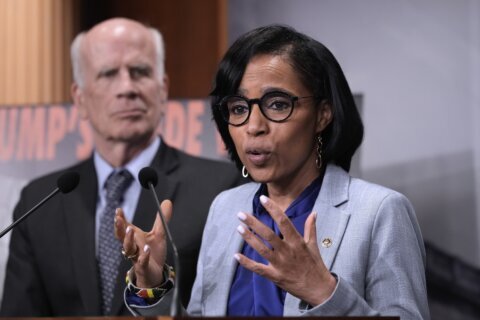Fourth and eighth grade students in Maryland are lagging behind in both math and reading, according to assessment data released Monday, and one state lawmaker said the declines reveal how education reforms in the state’s “Blueprint for Maryland’s Future” are needed.
The Blueprint was passed in 2021 to “enrich student experiences, accelerate student outcomes and improve the overall quality of education in Maryland,” and was formed based on recommendations from the Kirwan Commission, according to its website.
State Sen. Paul Pinsky, who chairs the state Senate’s Education, Health and Environmental Affairs Committee, said that the test scores, often referred to as “the nation’s report card,” had been on a downward trajectory since 2013. He said the past three years have unfortunately exacerbated the outcome on the tests.
Maryland’s largest declines were in math, with 75% of eighth grade students and 69% of fourth grade students scoring at or below basic achievement.
“Clearly, students, teachers, [and] parents got crushed during COVID,” Pinsky said. “I knew it was going to be bad results. It just was a horrible situation.”
Pinsky said the Blueprint includes programming that would call for intensive tutoring programs in the first five years of the reform plan.
Now, looking at the results of the NAEP tests, that tutoring may have to be extended.
“We might actually have to consider putting more money into it,” said Pinsky.
Under the legislation for school reform, students have to be tested going into the tutoring programs, Pinsky said: “Because we want to keep track. We want to have good data to show what programs really get results.”
When asked if the results on the exams bolster arguments that Maryland public schools should not have continued with remote learning for as long as they did, Pinsky said, “I don’t think so. We were finding our way — all of us. Protecting the lives of young children — and their families — was paramount.”
In a year or two, he said, “We’ll step back, take a breath, look at all the data from the school systems and all the results they received, and what worked and what didn’t work.” But, he said, it was too soon to say just when the return to school should have happened.
Pinsky said while the results show a sobering drop in performance in both reading and math for fourth and eighth graders across the country, there’s no immediate fix. Maryland’s education reform plan will be rolled out over a period of years.
“When we talk about raising the academic expectations, that’s going to take time,” Pinsky said. “When we talk about increasing and improving the teacher quality, attracting [and] retaining high- quality teachers, that won’t happen overnight.”
School systems across the state are still filling teaching vacancies, and there are concerns about teacher burnout. Pinsky was asked if the push to make sure that students can regain lost ground could exacerbate the situation with teachers heading for the doors.
“It’s a challenge,” Pinsky said. “It’s clearly a challenge. And some school systems continue to have problems recruiting teachers.”








